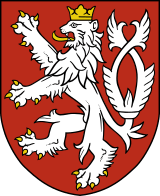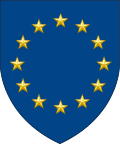Army of the Czech Republic
The Army of the Czech Republic (Czech: Armáda České republiky, AČR), also known as the Czech Army or Czech Armed Forces, is the military service responsible for the defence of the Czech Republic in compliance with international obligations and treaties on collective defence. It is also set to support peacekeeping, rescue and humanitarian operations both within the national territory and abroad.[13] Armed Forces consist of the General Staff, the Land Forces, the Air Force and support units.[14]
| Army of the Czech Republic | |
|---|---|
| Armáda České republiky | |
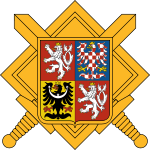 Coat of Arms | |
 Roundel | |
| Current form | 1 January 1993 |
| Service branches | Czech Land Forces Czech Air Force |
| Headquarters | Prague, Czech Republic |
| Leadership | |
| President of the Republic | |
| Prime Minister | |
| Minister of Defence | |
| Chief of the General Staff | |
| Manpower | |
| Military age | 18 years |
| Conscription | Abolished in 2004 |
| Available for military service | 2,414,728, age 15–49 (2005 est.) |
| Fit for military service | 1,996,631, age 15–49 (2005 est.) |
| Reaching military age annually | 66,583 (men) (2005 est.) |
| Active personnel | 25,899 soldiers and 8,059 civilians[1] |
| Reserve personnel | 3,236[2] |
| Expenditures | |
| Budget | CZK75.5 billion / $3.3 billion (2020)[3] |
| Percent of GDP | 1.30% (2020)[3] |
| Industry | |
| Domestic suppliers | |
| Foreign suppliers | |
| Related articles | |
| Ranks | Czech military ranks |
From the late 1940s to 1989, the extensive Czechoslovak People's Army (about 200,000) formed one of the pillars of the Warsaw Pact military alliance. After the dissolution of Czechoslovakia, the Czech Republic is completing a major reorganisation and reduction of the armed forces, which intensified after the Czech Republic joined NATO on 12 March 1999.[15]
As defined by the Czech Law No. 219/1999 Coll., the Armed Forces of the Czech Republic (Czech: ozbrojené síly České republiky) are the military forces of the Czech Republic. They consist of the Army of the Czech Republic, the Military Office of President of the Republic and the Castle Guard.[13]
History
Czech lands
Military history of the Czech people dates back to the Middle Ages and the creation of Duchy of Bohemia and Kingdom of Bohemia. During the Hussite Wars, Jan Žižka became a military leader of such skill and eminence that the Hussite legacy became an important and lasting part of the Czech military traditions.[16][17] European wars of religion once again wrecked the Czech lands, and at the Battle of White Mountain in 1620, Czech freedom was lost to the Habsburg Monarchy. Throughout the centuries of foreign rule, the Czechs were subjected, at times, to intense Germanization. Nevertheless, Czechs maintained their ethnic identity and seized the opportunity for independence during World War I. Czechs and Slovaks deserted the armies of Austria-Hungary in large numbers to form the Czechoslovak Legion.[16]
Czechoslovakia
The Czechoslovak Armed Forces were originally formed on 30 June 1918 when 6,000 members of the Czechoslovak Legion in France, which had been established in 1914, took oath and received a battle banner in Darney, France, thus preceding the official declaration of Czechoslovak independence by four months. There were also 50 000 legion soldiers in Russia at that time. The military achievements of the Czechoslovak legions on the French, Italian and especially Russian front became one of the main arguments that the Czechoslovak pro-independence leaders, especially for T. G. Masaryk in America,[18] could use to gain the support for the country's independence by the Allies of World War I.
In 1938, servicemen of the Czechoslovak Army and the State Defense Guard fought in an undeclared border war against the German-backed Sudetendeutsches Freikorps as well as Polish and Hungarian paramilitary forces. As a result of the Munich Agreement, areas heavily populated by ethnic German speaking people were incorporated into the Third Reich and military aged men living there were subject to being drafted into the Wehrmacht. Following the Czechoslovakia's complete annexation in 1939 and creation of the Protectorate of Bohemia and Moravia, the Protectorate's government possessed its own armed force, the Government Army (6,500 men), tasked with public security and rearguard duties. On the other side of the conflict, a number of Czechoslovak units and formations served with the Polish Army (Czechoslovak Legion), the French Army, the Royal Air Force, the British Army (the 1st Czechoslovak Armoured Brigade), and the Red Army (I Corps). Four Czech and Slovak-manned RAF squadrons were transferred to Czechoslovak control in late 1945.
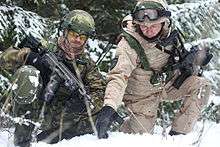
From 1954[19] until 1990, the Army was known as the Czechoslovak People's Army (ČSLA).[20] Although the ČSLA, as formed in 1945, included both Soviet- and British-equipped/trained expatriate troops, the "Western" soldiers had been purged from the ČSLA after 1948 when the communists took power. The ČSLA offered no resistance to the invasion mounted by the Soviets in 1968 in reaction to the "Prague Spring", and was extensively reorganized by the Soviets following the re-imposition of communist rule in Prague.
Of the approximately 201,000 personnel on active duty in the ČSLA in 1987, about 145,000, or about 72 percent, served in the ground forces (commonly referred to as the army). About 100,000 of these were conscripts.[21] There were two military districts, Western and Eastern. A 1989 listing of forces shows two Czechoslovak armies in the west, the 1st Army at Příbram with one tank division and three motor rifle divisions, the 4th Army at Písek with two tank divisions and two motor rifle divisions. In the Eastern Military District, there were two tank divisions, the 13th and 14th, with a supervisory headquarters at Trenčín in the Slovak part of the country.[22]
During the Cold War, the ČSLA was equipped primarily with Soviet arms, although certain arms like the OT-64 SKOT armored personnel carrier, the L-29 Delfín and L-39 Albatros aircraft, the P-27 Pancéřovka antitank rocket launcher, the vz. 58 assault rifle or the Uk vz. 59 machine gun were of Czechoslovak design.
After 1992 (dissolution of Czechoslovakia)
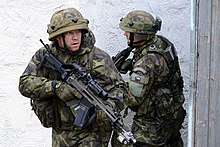
The Army of the Czech Republic was formed after the Czechoslovak Armed Forces split after the 1 January 1993 dissolution of Czechoslovakia. Czech forces stood at 90,000 in 1993. They were reduced to around 65,000 in 11 combat brigades and the Air Force in 1997, to 63,601 in 1999,[23] and to 35,000 in 2005. At the same time, the forces were modernized and reoriented towards a defensive posture. In 2004, the army transformed itself into a fully professional organization and compulsory military service was abolished. The Army maintains an active reserve.
The Czech Republic is a member of the United Nations and the Organization for Security and Co-operation in Europe. At the 1999 Washington summit, the Czech Republic joined NATO. Since 1990, the ACR and the Czech Armed Forces have contributed to numerous peacekeeping and humanitarian operations, including IFOR, SFOR, and EUFOR Althea in Bosnia, Desert Shield/Desert Storm, Afghanistan, Kosovo, Albania, Turkey, Pakistan and with the Coalition forces in Iraq.
Current deployments (2019):
- Lithuania: NATO Operation (NATO Enhanced Forward Presence) - 230 soldiers
- Latvia: NATO Operation (NATO Enhanced Forward Presence) - 60 soldiers
- Afghanistan: NATO Operation (Resolute Support Mission) - 390 soldiers
- Baltic states: NATO Operation (Baltic Air Policing) - 95 soldiers, 5x Jas 39 Gripen
- Kosovo: NATO Operation (KFOR) - 9 soldiers
- Mali: EU military training mission (EUTM Mali) - 120 soldiers
- Mali: UN peacekeeping mission (MINUSMA) - 5 soldiers
- Somalia: EU Operation Atalanta (NAVFOR) - 3 soldiers
- Sinai: International peacekeeping force (MFO) - 18 soldiers
- Iraq: Military intervention against the Islamic State of Iraq and Syria (OIR) - 31 soldiers (air advisory team), 12 soldiers (chemical unit)
- Mediterranean Sea: EU military operation (EU Navfor Med) - 5 soldiers
- Bosnia and Herzegovina: Military deployment to oversee the military implementation of the Dayton Agreement (European Union Force Althea) - 2 soldiers
- Golan Heights: UN peacekeeping mission (UNDOF) - 3 soldiers
- DR Congo: UN peacekeeping mission (MONUC) - 2 military observers
- Mali: UN peacekeeping mission (MINUSMA) - 2 military observers
- Kosovo: UN peacekeeping mission (UNMIK) - 2 military observers
- Central African Republic: UN peacekeeping mission (MINUSCA) - 3 military observers
Structure
Many of the duties of the President of the Czech Republic can be said to be ceremonial to one degree or another, especially since the President has relatively few powers independent of the will of the Prime Minister. One of those is the status as commander in chief of the military; no part of these duties can take place but through the assent of the Prime Minister. In matters of war, he is in every sense merely a figurehead, since the Constitution gives all substantive constitutional authority over the use of the armed forces to the Parliament.[24][25] In fact, the only specific thing the constitution allows the President to do with respect to the military is to appoint its generals – but even this must be done with the signature of the Prime Minister.[26]

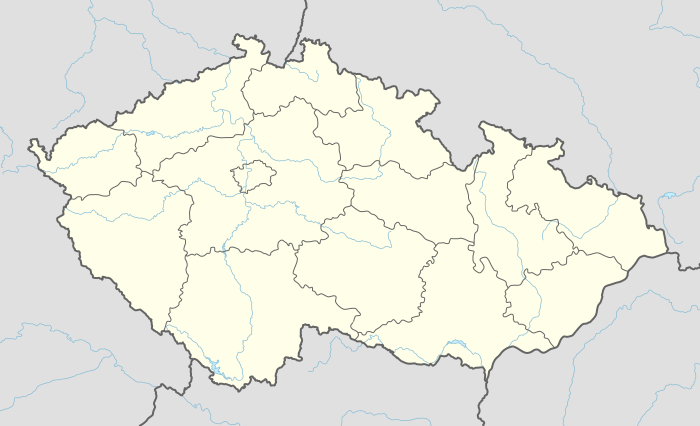
Structure of the Czech Armed Forces consists of two parts:[27]
- General Staff of Czech Armed Forces (Praha)
The 153rd Engineer Battalion based in Olomouc was created on 15 October 2008 and is subordinated to the 15th Engineer Regiment. The unit is stationed in the outskirts of the city of Olomouc, in place of the canceled 156th Rescue Battalion.[28]
Active reserves
Active Reserve (in Czech Aktivní záloha) is a part of the otherwise professional Army of the Czech Republic. This service was created to allow the participation of citizens with a positive attitude to the military.
A volunteer needs either to have completed the compulsory military service (which ended in 2004) or to attend 6 week training. Then the reservists have to serve up to three weeks a year and can be called up to serve two weeks during a non-military crisis. They are not intended to serve abroad. The Reserve presents itself on events like BAHNA, a military show.
Equipment
The Army of the Czech Republic is, to a large extent, using inventory dating back to the times of the Warsaw Pact. During the Cold War, Czechoslovakia was a major supplier of tanks, armoured personnel carriers, military trucks and trainer aircraft – the bulk of military exports went to its Comecon partners.[29] Replacement of the obsolete equipment, or making it at least compliant with the NATO standards, is urgently required. Modernization plans include acquisition of new multi-role helicopters, transport aircraft, infantry fighting vehicles or air defence radars and missiles. If possible, the Czech Ministry of Defence selects products that are manufactured or co-produced in the Czech Republic.[30] This includes firearms of the Česká zbrojovka Uherský Brod, namely the CZ 75 pistols, CZ Scorpion Evo 3 submachine guns, CZ 805 BREN and BREN 2 assault rifles. Moreover, the Czech Army is equipped with about 3000 T810 and T815 vehicles of various modifications produced by the Czech Tatra Trucks company.[31] Tatra Defence Vehicle factory ensures licensed production of Pandur II and Titus armoured vehicles. Aircraft such as the Aero L-39 Albatros, Aero L-159 Alca and Let L-410 Turbolet have been produced domestically as well.
At the beginning of 2019 Czech Ministry of Defence announced its modernization program consisting of acquiring 210 new modern IFVs as a replacement for aging BVP-2. MoD approached four manufacturers: BAE Systems (CV90), GDELS (ASCOD), Rheinmetall (Lynx) and PSM (Puma). Cost of the program should exceed 50 billions CZK.[32]
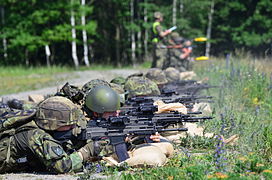 Soldiers with CZ-805 BREN assault rifles
Soldiers with CZ-805 BREN assault rifles Czech modernized
Czech modernized
T-72M4 CZ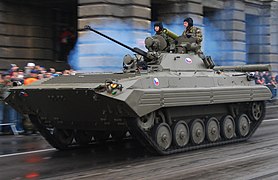 Czech BVP-2 at 2008 Prague military parade
Czech BVP-2 at 2008 Prague military parade- Czech Pandur II 8x8 wheeled IFV
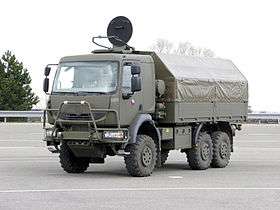 Tatra 810 medium truck
Tatra 810 medium truck.jpg) ShKH-77 Dana: 152mm Self-propelled cannon howitzer
ShKH-77 Dana: 152mm Self-propelled cannon howitzer- Czech Air Force modernized Mi-24V helicopter gunship
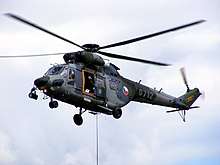
 Czech Air Force JAS 39 Gripen
Czech Air Force JAS 39 Gripen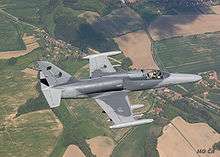 Czech Air Force L-159 light combat aircraft
Czech Air Force L-159 light combat aircraft
Uniforms
Different types of Czech Army uniforms:
.jpg)
.jpg) Standard woodland pattern camouflage uniform
Standard woodland pattern camouflage uniform Members of the Active Reserve during exercise
Members of the Active Reserve during exercise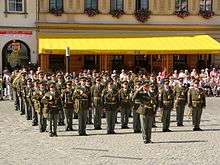 Czech military band in Olomouc
Czech military band in Olomouc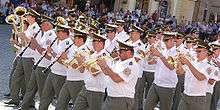 Czech military band in Olomouc
Czech military band in Olomouc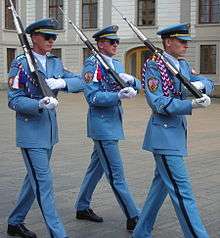 Soldier of Prague Castle guard holding ceremonial Vz. 52 rifle
Soldier of Prague Castle guard holding ceremonial Vz. 52 rifle
Commanding officers
- Chief of the General Staff: Army General Aleš Opata
- First Deputy Chief of the General Staff: Major General Miroslav Žižka
- Deputy Chief of the General Staff of the AČR-Chief of Staff: Major General Bohuslav Dvořák
- Deputy Chief of the General Staff - Director of Joint Operation Centre: Major General Jiří Verner
- Deputy Chief of the General Staff - Inspector of the AČR: Major General František Malenínský
- Immediately Subordinated Offices:
- Military Regional Office, Boletice
- Military Regional Office, Brdy
- Military Regional Office, Březina
- Military Regional Office, Hradiště
- Military Regional Office, Libavá
- Support Policy Division: Director Major General Pavel Jevula
- Immediately Subordinated Institutions:
- Central Military Hospital, Prague
- Military Hospital, Brno
- Military Hospital, Olomouc
- Institute of Aviation Medicine, Prague
- Communication and Information Systems Division:Director - Chief of the Signal Corps of AČR: Colonel Jan Kaše
- Immediately Subordinated Institutions:
- 6th Communication Centre
- Research and Communication Centre 080
- Information Technology Development Agency
- Force Planning Division: Acting Director Colonel František Mičánek
- Reconnaissance and Electronic Warfare Department: Director Colonel Miroslav Žižka
- Immediately Subordinated Office:
- Military Geography and Hydrometeorology Office
- Military Aviation Authority: Director Colonel Josef Otta
Current and historic military ranks
These are the military ranks, historic and present-day, of the Armed Forces of the Czech Republic and its predecessor force, the Czechoslovak Armed Forces, later known as the People's Army.
Enlisted and non-commissioned officers
- Vojín - Private, Airman
- Svobodník - Private First Class, Airman first class
- Desátník - Corporal, Senior Airman
- Četař - Sergeant
- Četař jednoroční dobrovolník - Volunteer Sergeant (used 1919-1920)
- Rotný - Staff Sergeant (formerly Sikovatel from 1919-20)
- Štábní šikovatel - Company Sergeant Major (used 1918-1920)
- Staršina - Platoon Sergeant, Flight sergeant (part of the rank system 1948-1959)
Warrant officers
- Rotmistr - Sergeant First Class, Technical Sergeant
- Nadrotmistr - Master Sergeant
- Štábní rotmistr - First Sergeant (abolished 2011)
- Důstojnický zástupce - Cadet Warrant officer (used 1919-1920)
- Podpraporčík - First Warrant Officer (abolished 2011)
- Praporčík - Warrant officer
- Nadpraporčík - Senior Warrant Officer
- Štábní praporčík - Chief Warrant Officer (abolished 1949, reinstated 1999)
Officer cadets and military school cadets
- Kadet Aspirant - Officer cadet (used 1919-1920)
- Gážista mimo hodnostní třídu - Reserve Officer Candidate (used 1919-1920)
Higher and Lower Officers
- Podporučík OF-1c - Sub-lieutenant (abolished 2011)
- Poručík OF-1b - Second lieutenant, Lieutenant
- Nadporučík OF-1a - First lieutenant
- Kapitán - Captain (formerly Setník in the Home Army)
- Štábní kapitán - Senior Captain (abolished 1952-53)
- Major
- Podplukovník - Lieutenant colonel
- Plukovník - Colonel
Generals
- Brigádní generál - Brigadier General (Jun 12th, 1953 to generálmajor, 1999 reinstated to Brigádní generál)
- Divizní generál - Divisional General (Jun 12th, 1953 to generálporučík)
- Generálmajor - Major General (exists Jun 12th, 1953 to present)
- Generálporučík - Lieutenant General (exists Jun 12th, 1953 to present)
- Polní podmaršálek - Lieutenant Field Marshal (used 1918-1920)
- Sborový generál - Corps General (Jun 12th, 1953 to generálplukovník)
- Generálplukovník - Colonel General (abolished 1998)
- Generál - General (created in 1920 and abolished 1930, today highest rank in Slovakia)
- Armádní generál - General of the Army, General of the Air Force
- Polní zbrojmistr - Field marshal (used 1918-1920)
See also
- Czechoslovakian naval forces
- Government Army
References
- "VÝVOJ SKUTEČNÝCH POČTŮ OSOB V RESORTU MO ČR V LETECH 1992 - 2019".
- "VÝVOJ SKUTEČNÝCH POČTŮ OSOB V RESORTU MO ČR V LETECH 1992 - 2019".
- "Rozpočet (2020)".
- "Czechs Choose, Cancel, then Come Back to Pandur II APCs".
- "Gripen Contract Signed for Czech Republic".
- http://www.airforce-technology.com/news/newssaab-contracted-for-gripen-lease-extension-in-czech-republic-4467566%5B%5D
- "Stockholm International Peace Research Institute Trade Register"
- "Czech Republic Eager to Buy More Land Rover Vehicles for Foreign Missions".
- "Czech MoD to buy three Spanish EADS CASA-295M transport aircraft".
- "Czechs bought three CASA aircraft for price of four, 2005 document shows". 2012-07-16.
- "RUSSIA STARTS DELIVERY OF MI-171 AND MI-35 HELICOPTERS TO CZECH REPUBLIC | Oboronprom". Archived from the original on 2015-12-22. Retrieved 2015-12-14.
- http://www.themoscowtimes.com/business/article/poland-snaps-up-23-migs-for-1-euro/248839.html
- "Armed Forces » Professional Army". Ministry of Defence & Armed Forces of the Czech Republic. Ministry of Defence. Retrieved 25 May 2016.
- "Organisational Structure of the General Staff of ACR". Ministry of Defence & Armed Forces of the Czech Republic. Ministry of Defence. Retrieved 10 January 2018.
- "Military Balance in Europe 2011"., March 07, 2011.
- Gawdiak, Ihor, ed. (1989). Czechoslovakia: a country study (3rd ed.). Federal Research Division, Library of Congress. pp. 218–219.
- Matuška, Matěj; Syka, Jan (2015). Husitský válečník: Kdo byli boží bojovníci... Grada Publishing. p. 162. ISBN 978-80-247-5156-6.
- PRECLÍK, Vratislav. Masaryk a legie (Masaryk and legions), váz. kniha, 219 pages, first issue - vydalo nakladatelství Paris Karviná, Žižkova 2379 (734 01 Karviná, CZ) ve spolupráci s Masarykovým demokratickým hnutím (Masaryk Democratic Movement, Prague), 2019, ISBN 978-80-87173-47-3, pp.17 - 25, 33 - 45, 70 – 96, 100- 140, 159 – 184, 187 - 199
- Burian, Michal; Rýc, Jiří (2007). Historie spojovacího vojska [History of [Czechoslovak] Signal Corps] (in Czech). Prague: Ministerstvo obrany – Agentura vojenských informací a služeb. p. 148. ISBN 978-80-7278-414-1.
- For more information on the Czechoslovak Army during the Cold War, see Gordon L. Rottman, Warsaw Pact Ground Forces, Osprey Publishing, 1987
- Library of Congress Country Study: Czechoslovakia, Ground Forces, 1987
- Orbat.com, Warsaw Pact Order of Battle 1989 Archived 2016-03-03 at the Wayback Machine, accessed 2 June 2010
- "Starting points for professionalization of the armed forces" (in Czech). 2000. Retrieved 2008-06-27.
- Constitution of the Czech Republic, Art. 43
- Constitution of the Czech Republic, Art. 39
- Constitution of the Czech Republic, Art. 63
- "New management and command structure of Armed Forces of the Czech Republic as of 1 July 2013". www.army.cz. Ministerstvo obrany. Retrieved 6 July 2013.
- http://www.153zpr.army.cz - webové stránky praporu www.153zpr.army.cz
- Kiss, Yudit (1997). The Defence Industry in East-Central Europe: Restructuring and Conversion. New York: Oxford University Press. p. 15. ISBN 978-0-19-829280-7.
- Sabak, Juliusz. "Czech Republic Doubles Its Defence Expenditure. "Modernization, More Troops, New Units"". Defence24. Retrieved 29 December 2017.
- Casey, Nuala; Holeček, Oldřich. "Minister of Defence receives shipment of Tatra trucks". Ministry of Defence. Ministerstvo obrany. Retrieved 29 December 2017.
- "Ministerstvo obrany podepsalo s VOP CZ memorandum o spolupráci v projektu největší armádní zakázky v". armadninoviny.cz (in Czech). Retrieved 1 February 2019.
Further reading
- Stephane Lefebvre, 'The Army of the Czech Republic: A Status Report,' Journal of Slavic Military Studies, Vol. 8, No. 4, December 1995, pp. 718–751
- Tomáš Weiss, 'Fighting Wars or Controlling Crowds? The Case of the Czech Military Forces and the Possible Blurring of Police and Military Functions, Armed Forces & Society, Vol. 39, No. 3, pp. 450-466
External links
| Wikimedia Commons has media related to Military of the Czech Republic. |
- (in English) Ministry of Defence of the Czech Republic
- (in Czech) Information Center about NATO
